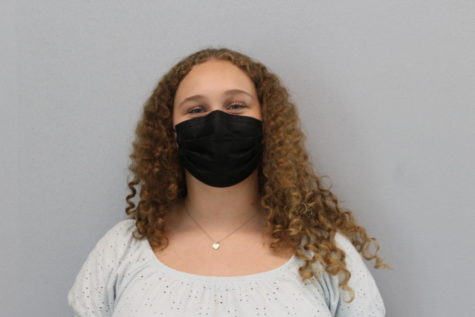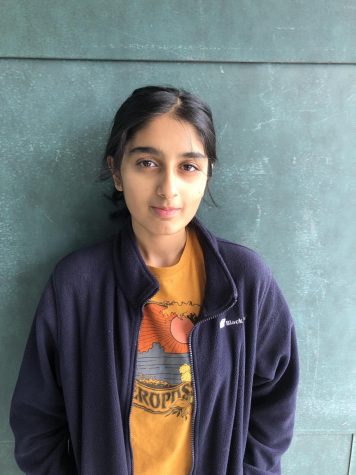Best Buddies and Special Ed, Pandemic Style
Find out how Stevenson’s Best Buddies and Special Education programs are adapting to the Coronavirus Pandemic
Jenny Callen sits on the front steps of her house, a mask covering her mouth and a friend six feet away. Nestled within the unknowns of a pandemic is the beginning of her last year in the Best Buddies Transition program. For Callen, the transition program is a home and family, but with the rapid transmission of COVID, Callen believes it’s too risky to ask for normalcy.
However, it takes more than a pandemic to shut down this program. Best Buddies, which fosters connections between students with disabilities and high school volunteers, has fought to stay open and is currently operating through a mix of Zoom and in-person learning. The transition program, which helps ease students into the working world or into a second degree education, is also using Zoom to further these student connections.
“Each buddy family has their own table, and at these tables they stay six feet apart from the others at the same table,” said Lora Lewis ’22, a Best Buddies Executive Board Outreach director.
These guidelines have made it possible for this year’s new pairings of buddies to get to know each other for the first time since March.
“I think it’s important to keep these connections alive right now,” said Brynn Stein ’22, one of Best Buddies’ Social Media Directors. “We all need a friend at a time like this, and I am so passionate about [making sure the program runs smoothly.] We’re all taking precautions, but we’re doing our best for Best Buddies to be as impactful as it always is.”
Many students see high school as a time to make valuable memories, and while the pandemic may have created a hitch in the road, members such as Callen are still finding solace and friendship with their buddies. The purpose of Best Buddies is to foster connections, and it seems that challenge has only reinforced the importance of interaction through new activities.
Jenny Callen and her buddy Ainslee Cutler ‘21 hang out together before the pandemic. Although they cannot come in close contact like this anymore, they still are finding ways to have fun together while staying socially distant
“We’ve been going on walks together, we’ve been trying to figure out more ways to connect,” Callen said. “It’s been really nice just to go to Stevenson and see my buddy. It’s always nice seeing a friend after a long day.”
Although they cannot have typical interactions, Best Buddies members like Callen appreciate the opportunity to continue the program during the pandemic. They can still do activities like painting or playing games while following social distancing guidelines.
This physical disconnect has also been difficult for the general education students who participate in the program as buddies. Lewis has had to adjust to not being able to have physical contact with her buddy.
“In normal times, we are always so excited to see each other and are able to have not only verbal and communicative interactions, but also physical interactions like high fives and hugs as well,” Lewis said.
Callen has been part of the Best Buddies program since her freshman year. With her last year underway, she’s already connected with many volunteers and has forged friendships that have helped shape her as a person. Best Buddies may have the initial goal of creating friendships, but it’s also helped her find comfort and respect for who she is as a person. .
“Having a disability was something that I was, you know, angry about, hurting about, but the program really made me embrace this part of myself,” Callen said. “Best Buddies has made me realize that having people with special needs, you know, there won’t always be bullying. Someone will always accept you.”
Callen feels that creating friendships in high school and connecting with others eventually allowed her to show kindness to herself. However, with the pandemic, there are often moments being missed and friendship is often reduced to the time spent on screens, through facetime or zoom. Still, Callen is grateful for the support.
“It’s been hard since it’s my last year and it feels like I’m missing memories,” Callen said. “But we’re still together. It doesn’t have to be complicated and it’s nothing extravagant, but having [my buddy] there means a lot to the both of us.”
Best Buddies has also been a comfort she could turn to as the pandemic affected her own life. It’s provided support as she and her family went through trying times of their own.
“My sister is out on the east coast. The only connection I really have with her is calling her or writing her a letter. It’s just been really hard not being able to see her,” Callen said. “Me and my family are finding more ways to cope with [the pandemic] together. And I can always turn to my buddy.”
Similar to the Best Buddies program, a mix of in-person and virtual classes are being provided for special education students as a way to connect with others during the school day.
Educational Life Skills program student Mark Bright and paraprofessional Beth Grotelueschen work together on the ipad. Both special education students and teachers are excited for this opportunity to work together in person again.
“Students miss being together. We’re all missing each other,” Traci Krawzyck, Stevenson’s Special Education director, said.
Throughout the past Summer, Stevenson’s special education department held meetings to decide what the best plan is in terms of structured learning. Whether a student uses in-person, virtual, or hybrid learning depends on their specific needs.
In-person teachers needed to figure out how to incorporate factors such as proper PPE wearing, mask breaks, and sanitizing equipment into the school day. Likewise, remote teachers decided what parts of their curriculum were the most important, thus eliminating the lessons with less interaction so that students do not lose engagement over Zoom.
Mark Erickson, a Paraprofessional with the Transition Program, wipes down a pair of headphones after use. The Special Education department makes sure that proper Coronavirus protocols are followed to ensure the safety of their students and teachers.
One of the biggest challenges for the Special Education department in returning to school during the pandemic is making both virtual and in-person learning feel as normal as possible. Many aspects of the organization are no longer possible due to the potential of spreading the virus. For example, students would often do activities around the community before the pandemic.
Although the current learning situation has presented challenges, the Special Education department has found many silver linings. The staff has worked hard to provide the best experience they can for their students right now, both the teachers and students involved to adapt to new situations and become stronger together.
Transition program student Julia Goldstein and paraprofessional Jodie Mosk work together on an assignment. Behind them, special student Jeremy Millman has a conversation with special education teacher Breanna Quaritsch and paraprofessional Mark Erickson.
“I think it’s allowed us to all grow in a way we didn’t expect because we had to think outside the box and get creative,” Dede Gill, Director of the Exceptional Learners Cooperative, said, “Teachers and students have come together in a way we never have before.”
Special Education students have found it important that they remain involved with Best Buddies, Allied Sports, and in-person or virtual classes. These help them feel confident and have a sense of belonging, much like it did for Callen.
“It wasn’t always easy to be kind to myself and I used to think, ‘Why me?” Callen said, “But now, I feel proud that my disability is a part of me.”


Tia Vasudeva is a junior and a first year staffer. She values Statesman for its ability to provide a platform for all things news and new.

